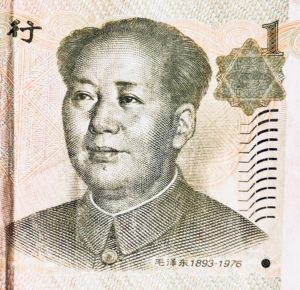 Although not very many technical details of China’s plans for its central bank digital currency (CBDC) have been shared publicly, the virtual yuan is raising privacy concerns and may lead to potential national security issues and problems related to political power.
Although not very many technical details of China’s plans for its central bank digital currency (CBDC) have been shared publicly, the virtual yuan is raising privacy concerns and may lead to potential national security issues and problems related to political power.
The Digital Currency/Electronic Payment (DCEP) system could allow the Chinese Communist Party to closely monitor financial transactions between the country’s residents.
Given these developments, the United States must also begin focusing on developing its own tools for creating and managing CBDCs. Currently, China is leading the world when it comes to implementing a CBDC. But with that lead comes increased concerns regarding the downstream effects a digital renminbi might have such as issues related to political power and privacy.
A report from the Center for New American Security (CNAS) has outlined the history and current state of China’s CBDC. The report also looks at the technical details of the initiative and suggests certain policy steps the United States may want to consider so it can also potentially develop a similar (or better) CBDC.
The report noted:
“This CBDC system, which the Chinese government calls Digital Currency/Electronic Payment (DCEP), will likely enable the Chinese Communist Party (CCP) to strengthen its digital authoritarianism domestically and export its influence and standard-setting abroad. By eliminating some of the previous constraints on government data collection of private citizens’ transactions, DCEP represents a significant risk to the long-held standards of financial privacy upheld in free societies.”
The potential privacy issues may arise from the excessive amount of insight a CBDC might provide to the Chinese government into its users’ financial details and related behavior. A digital currency system might also provide information about any citizen who engages with those users – such as (potentially) US residents.
Yaya J. Fanusie, an Adjunct Senior Fellow at CNAS and co-author of the report, said that the DCEP may give the Chinese Communist Party something that no other world government has ever had – which would be the ability to closely monitor in real time the financial transactions of its residents.
Fanusie added that although the world mostly transacts in a digital environment, that transactional data isn’t easily accessible wholesale by government entities since the authorities need to go through the financial services providers to obtain the data.
The DCEP design is different from this type of model, because it places the data directly in the hands of the CCP without them having to deal with third-parties. Anyone using a virtual renminbi actually concedes their financial privacy to the Chinese government, Fanusie claims. It’s not clear just how accessible the DCEP might be in locations outside China, however, if it is, then it may have certain serious implications for other nations’ authorities and governments.
Fanusie also mentioned:
“The U.S. government needs to assess whether DCEP use should be blocked in the United States. But private-sector U.S. tech companies should also be thinking about whether they will allow the DCEP application to be accessible on their platforms, such as app stores.”
The report confirmed that People’s Bank of China officials had stated that the CBDC would have “controllable anonymity,” which means the reserve bank will be able to monitor financial transactions but the transacting parties or entities would remain private. However, the PBoC also noted that it will be able to closely examine transactions in order to prevent crimes.
The report added:
“PBOC modeling of DCEP shows that each digital currency token held by users would be constructed with a cryptographic algorithm expression, with various data inputs such as information on the owner of the token. Not all of the data will be available to those transacting in DCEP, but they will all be available to the central bank, according to its early proposed design sketches and most technical reports about DCEP.”

